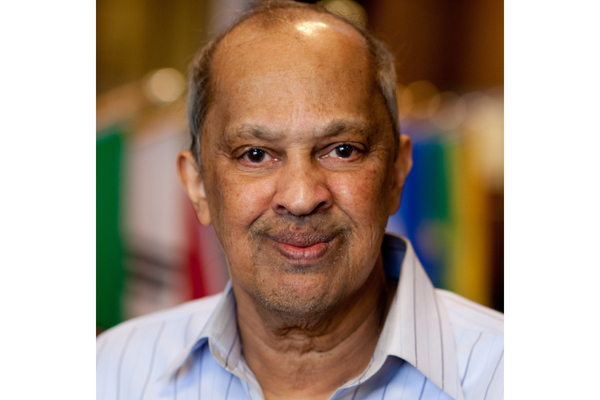Palghat Ramachandran, professor of energy, environmental & chemical engineering, 75
Ramachandran worked extensively on modeling and analysis of multiphase reactors as applied to chemical and pharmaceutical industry

Palghat (P.A.) Ramachandran, professor of energy, environmental & chemical engineering, died Thursday, March 18, 2021, of natural causes in his sleep. He was 75.
Ramachandran joined the faculty at Washington University in St. Louis in 1982 as an associate professor. He taught many graduate courses in transport phenomena, reaction engineering, multiphase reactor analysis, computational engineering, engineering mathematics, environmental reaction engineering, semi-conductor material processing analysis, and pollution prevention in chemical processes.
Ramachandran’s research interests were in chemical reaction engineering, three-phase catalytic reactors, mathematical modeling, semiconductor material processing, boundary element and integral equations, and reactor design for pollution prevention. He worked extensively on modeling and analysis of multiphase reactors as applied to chemical and pharmaceutical industry. Over the course of his career, he published more than 200 papers in refereed journals, as well as four books and several monographs.
Vijay Ramani, the Roma B. & Raymond H. Wittcoff Distinguished University Professor in the Department of Energy, Environmental & Chemical Engineering, first found Ramachandran’s work as an undergraduate student while studying heterogeneous reactors.
“I was thrilled to be his colleague in the department these past five years, during which time I have learned a lot from him,” Ramani said. “He was a wonderful teacher, mentor and friend, who could speak with authority on a diversity of topics. He was an outstanding chemical engineer who melded mastery of core fundamentals with rigorous applied mathematical methods to solve truly challenging and emergent problems at the interface of reaction engineering and transport phenomena.”
Ramani and a graduate student in his lab, Yunzhu Zhang, had been working with Ramachandran over the past two years.
“We were working on a rather intractable problem, namely quantifying the influence of the interfacial Donan potential on transport of ions through a charged membrane,” Ramani said. "Thanks entirely to Ram’s foundational knowledge of the boundary element method using integral equations, we were able to quantify this phenomenon and had just prepared a paper for publication. I am deeply saddened by his sudden demise. It is truly the end of an era for the department and the profession. Ram will be deeply missed by all of us."
Pratim Biswas, former chair of the Department of Energy, Environmental & Chemical Engineering now dean of engineering at the University of Miami, said he was deeply saddened to learn of Ramachandran's death.
"His contributions to the use of boundary element methods in solving problems in transport (heat and mass) are noteworthy — and he will be remembered for that," Biswas said. "The hallmark of a faculty member is by the influence they have on students — and a whole generation of PhD students have benefitted and learned from him."
He received numerous awards, including the Moulton Medal from the Institution of Chemical Engineering (England) in 1971; the Institute of Chemical Technology Distinguished Alumni Award; NASA Certificate of Recognition; National Environmental Engineering Research Institute Medal; Indian Institute of Chemical Engineers; and the Big Fish Award from the Engineering School for graduate student mentoring and education.
He had numerous visiting professorships, including Indian Institute of Technology Delhi and Indian Oil Corp., Faridabad, Transfer of Knowledge through Expatriate Nationals (TOKTEN) visiting scholar; Kasetsart University, Bangkok, visiting professor; ICT. Mumbai, Dow/Sharma visiting professor; Commonwealth Scientific and Industrial Research Organisation (CSIRO), Melbourne, Australia, short-course lecturer; and Institute for Energy Technology, Kjeller, Norway, researcher and collaborator.
Prior to joining WashU, he was with the process design and development group at the National Chemical Laboratory in Pune, India, from 1978-1982; a research chemical engineer at the University of California, Davis from 1976-78; a research fellow at the University of Salford, England from 1974-75; and a lecturer at the University of Bombay, India from 1972-73.
Ramachandran earned bachelor’s and doctoral degrees from the University of Bombay in 1967 and 1971, respectively.
Ramachandran is survived by his daughter, Nima Rothmel, and her husband, Josh Rothmel; two grandchildren, Maya and Gabe Rothmel; two brothers, a sister and numerous nieces and nephews.
A memorial service will be held at a later date. Memorial contributions may be made to North Side Community School in St. Louis. His family set up a webpage on which colleagues and friends may share condolences.



